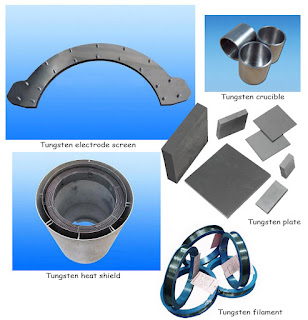Tungsten products
Tungsten products

Tungsten was discovered in 1781 by the Swedish chemist, Karl Wilhelm Scheele. Tungsten is both the most abundant of the refractory metals, and has the highest melting point of all metals, at 3,410 °C (6,170 °F). Tungsten wire filaments provide the vast majority of household incandescent lighting, but are also common in industrial lighting as electrodes in arc lamps. Gas tungsten arc welding (GTAW, also known as tungsten inert gas (TIG) welding) equipment uses a permanent, non-melting tungsten electrode. The most common use for tungsten is as the compound tungsten carbide in drill bits, machining and cutting tools. It also finds itself serving as a lubricant, antioxidant, in nozzles and bushings, as a protective coating and in many other ways. Tungsten can be found in printing inks, x-ray screens, photographic chemicals, in the processing of petroleum products, and flame proofing of textiles. Tungsten is also used by virtue of its strength and density, in applications ranging from weights in helicopter rotors and weapon projectiles to the heads of golf clubs. The largest reserves of tungsten are in China, with deposits in Korea, Bolivia, Australia, and other countries.
The main tungsten products include tungsten concentrate, ferrotungsten, APT, deep-processed tungsten products, tungsten bar, tungsten wire filament and so on.
No comments:
Post a Comment